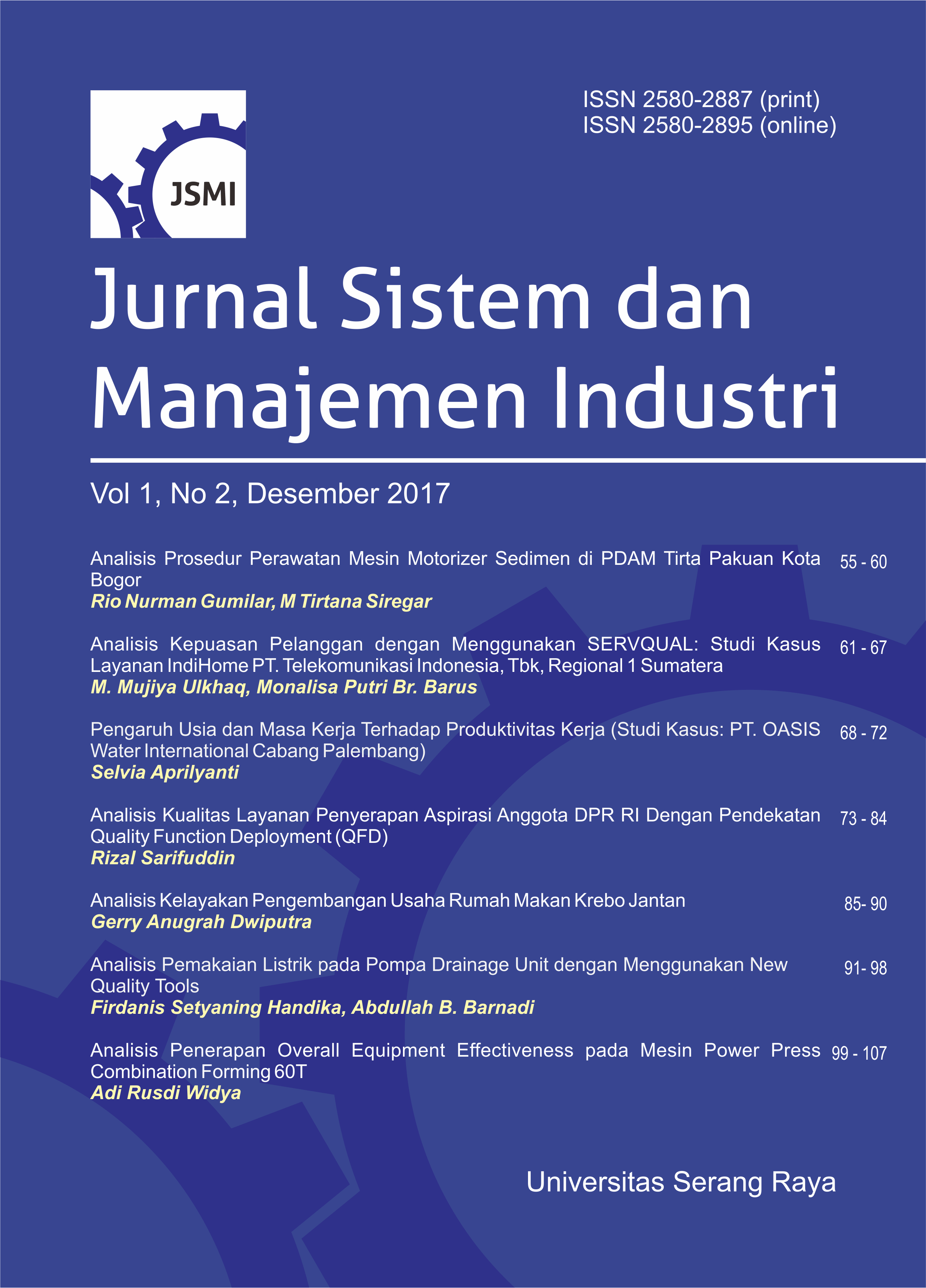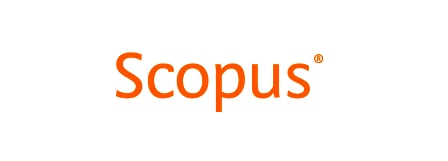Pengaruh Usia dan Masa Kerja Terhadap Produktivitas Kerja (Studi Kasus: PT. OASIS Water International Cabang Palembang)
DOI:
https://doi.org/10.30656/jsmi.v1i2.413Keywords:
Multiple Linear Regression, Productivity, SPSS, Years of serviceAbstract
Age and years of service are factors directly related to work productivity. Age and employment perceived by employees can decrease productivity or increase employee productivity. This research was conducted at PT. Oasis Water International Palembang Branch and aims to determine the influence of Age and Duration of employment on employee productivity. The number of sample is 27 respondents by using random sampling technique. Analysis method used is multiple linear regression method using SPSS aid which includes t test and F test. As independent variable (independent), that is age and work period, while dependent variable is work productivity. The result of data analysis showed that the variable of age and duration of work did not have a positive effect on work productivity, where the probability value of F test of significance value for the effect of age and work period simultaneously to productivity was 0.355 > 0.05 and F value count 1.083 <F table 3.39, and from the results of the analysis using the coefficient of determination known that the factor of age and employment only has an effect of 8.3 percent (%) on work productivity in the company PT.Oasis Water International.
Downloads
References
Amron, T. I. (2015). Analisis Faktor-Faktor yang Berpengaruh Terhadap Produktivitas Tenaga Kerja pada Outlet Telekomunikasi Seluler Kota Makasar. Skripsi, Fakultas Ekonomi dan Bisnis, Universitas Hasanudin.
Aryani, D., & Rosinta, F. (2011). Pengaruh kualitas layanan terhadap kepuasan pelanggan dalam membentuk loyalitas pelanggan. Jurnal Ilmu Administrasi Dan Organisasi, 17(2), 114–126.
Devi, E. K. D. (2009). Analisis Pengaruh Kepuasan Kerja Dan Motivasi Terhadap Kinerja Karyawan Dengan Komitmen Organisasional Sebagai Variabel Intervening (Studi Pada Karyawan Outsourcing PT Semeru Karya Buana Semarang). Doctoral dissertation, Program Pasca Sarjana, Fakultas Ekonomika dan Bisnis, Universitas Diponegoro.
Indriantoro, N., & Supomo, B. (1999). Metodologi Penelitian Bisnis untuk Akuntansi dan Manajemen. Yogyakarta: BPFE.
Mahendra, A. D., & Woyanti, N. (2014). Analisis Pengaruh Pendidikan, Upah, Jenis Kelamin, Usia dan Pengalaman Kerja Terhadap Produktivitas Tenaga Kerja (Studi di Industri Kecil Tempe di Kota Semarang). Doctoral dissertation, Fakultas Ekonomika dan Bisnis, Universitas Diponegoro.
Nainggolan, R., Purwoko, A., & Yuliarso, M. Z. (2012). Faktor–Faktor Yang Mempengaruhi Produktivitas Tenaga Kerja Pemanen Sawit Pada PT. Bio Nusantara Teknologi, Bengkulu. Jurnal Agrisep, 11(1), 35–42.
Pamungkas, A. D. P., Hamid, D., & Prasetya, A. (2017). Pengaruh Pendidikan dan Pengalaman Kerja Terhadap Kemampuan Kerja dan Kinerja Karyawan (Studi pada Karyawan PT. INKA (Persero)). Jurnal Administrasi Bisnis, 43(1), 96–103.
Sudjana, N. (2005). Metode statistika. Bandung: Tarsito.
Sugiyono. (2008). Metode Penelitian Bisnis. Bandung: CV. Alfabeta.
Sulaeman, A. (2014). Pengaruh Upah dan Pengalaman Kerja Terhadap Produktivitas Karyawan Kerajinan Ukiran Kabupaten Subang. TRIKONOMIKA, 13(1), 91–100.
Tanto, D., Dewi, S. M., & Budio, S. P. (2012). Faktor-Faktor Yang Mempengaruhi Produktivitas Pekerja Pada Pengerjaan Atap Baja Ringan Di Perumahan Green Hills Malang. Rekayasa Sipil, 6(1), 69–82.
Wirawan, K. E., Bagia, I. W., Si, M., & Susila, G. P. A. J. (2014). Pengaruh Tingkat Pendidikan dan Pengalaman Kerja Terhadap Kinerja Karyawan. Jurnal Jurusan Manajemen, 4(1), 1–10.
Downloads
Published
Issue
Section
License
All articles in Jurnal Sistem dan Manajemen Industri can be disseminated provided they include the identity of the article and the source of the article Jurnal Sistem dan Manajemen Industri. The publisher is not responsible for the contents of the article. The content of the article is the sole responsibility of the author
Jurnal Sistem dan Manajemen Industri is licensed under a Creative Commons Attribution-NonCommercial-ShareAlike 4.0 International License.
















1.png)
.png)
.png)
.png)


